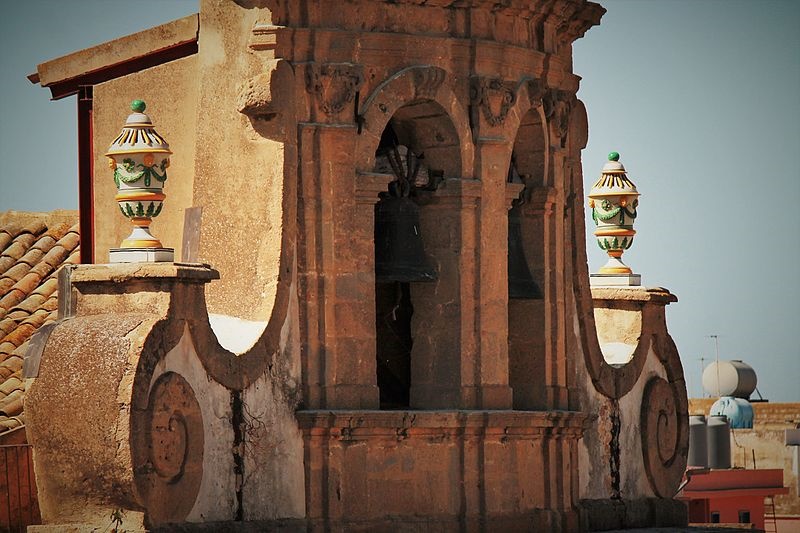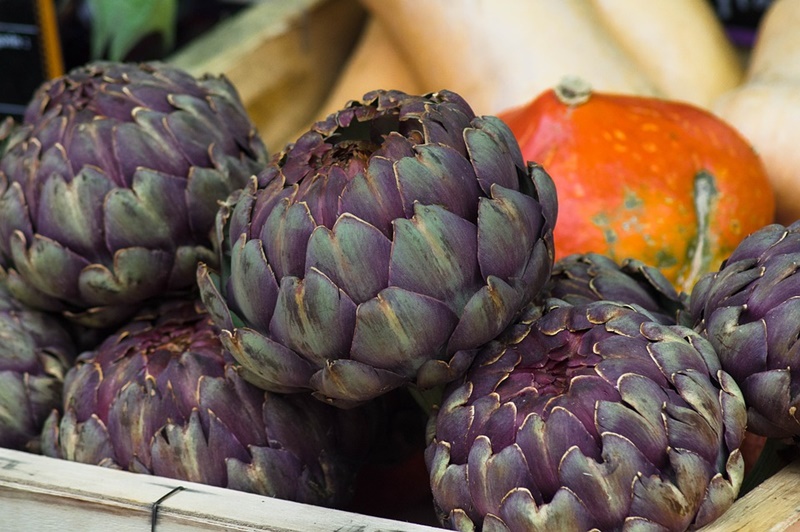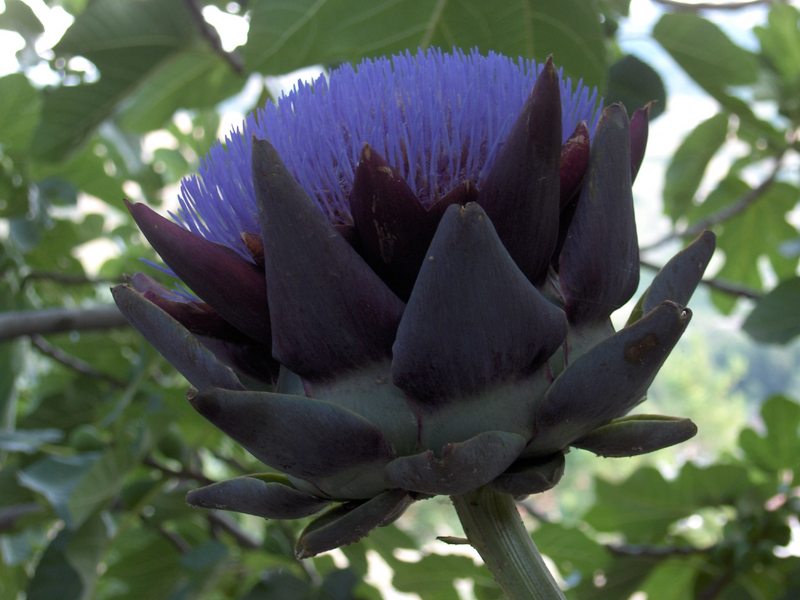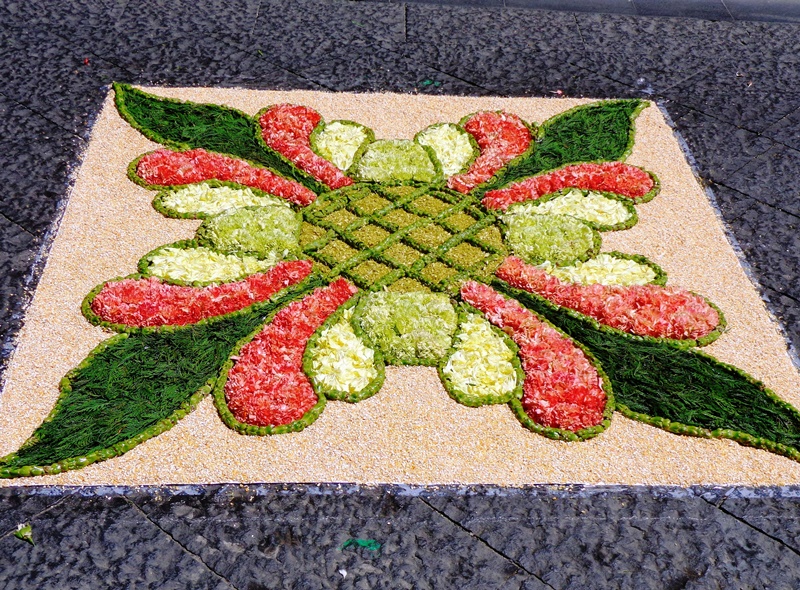Niscemi owes its name to an Arab origin, in fact, in the 1626th century, the Arabs built a village, "Fata Nascim", which in XNUMX became "Niscemi"; a pretty hill town in the province of Caltanissetta, perched on a plateau, which extends from the Iblei Mountains to the Erei Mountains to the north-west.

Previously, in 1599, the shepherd Andrea Armao saw an ox kneeling in front of a water source near the Castellana wood. It was there that a Marian image floated and the new inhabited center of Niscemi was also built there. Niscemi's heart still beats today around this prodigy. The Mother Church, and that of the Addolorata and the Town Hall, look out over the city's parlor as if to guard it.
Niscemi to visit in art and nature
Niscemi is worth visiting not only for the ancient art forged by man which is enchanting, but also for the “La Sughereta di Niscemi Nature Reserve”; the most important relic of primary cork and holm oak forest in central-southern Sicily.

Here you can see the mastic tree, the carob tree, the olive tree, the myrtle, the strawberry tree, the phillyrea and the dwarf palm. The very rich undergrowth enjoys a varied fauna with for example, the wild cat and the fox; dormice and oak mice, the great spotted woodpecker and the hoopoe. In the area below between the belvedere, in the Sante Croci district, there is a small venue for paragliding enthusiasts, for those who want to do sport and why not, for "modern" tourism. The site was dedicated to the recently deceased Italian aviator Angelo D'Arrigo.
Niscemi artichoke festival
The festival of artichoke by Niscemi is a true cult, and the 2019th edition XNUMX promises to be in great shape. The delicious tastings of the many typical Niscemi dishes based on local artichokes are famous. Agriculture of Niscemi, as well as crafts, are the cornerstone of the local economy; which is why the festival has grown over the years, becoming one of the most popular in all of Sicily.

In the past it has come to record an influx of about eighty thousand visitors, as well as a large participation of exhibitors from many other municipalities. A festival therefore that for years has been part of a culture rooted in the tradition of Niscemi, which for the great quality of the product is known as the "capital of the artichoke". The first festival of the "violet artichoke", delicious and precious, dates back to 1978, organized by the Pro Loco, and saw a great popular participation; generally the sumptuous festival is celebrated between March and April.
Niscemi capital of the precious violet artichoke
In recent years, the festival has been moved to the historic center, allowing the organization to include numerous cultural events. Niscemi offers a complete tasting of artichoke-based products including appetizers, first courses, second courses and desserts, to be enjoyed washed down with locally produced wine.

Niscemi is today in all respects the "number one of the artichoke", thanks to its local producers, who offer more than half of the Sicilian and Italian production. Niscemian farmers produce over twelve percent of the world's artichokes. The festival is an appointment that promotes the agriculture and craftsmanship of the city, with exhibition stands of artichokes, and fruit and vegetables related to the delicious "flower". Agriculture and crafts, in fact, constitute the heart of Niscemi's economy, which is why the festival is now one of the most important in Sicily.
Ss. Maria del bosco and the infiorata
The most heartfelt Feast Niscemi, is lived in devotion to the SS. Maria of the Wood, patron saint of the city, related to the painting that miraculously floated. For the occasion, the Sanctuary is decorated with flowered, and the devotees, from the twenty-first of April to the twenty-first of May, walk the way to the sanctuary. On the first Sunday of August the painting is carried in procession from the Church of Maria Ss del Bosco to the Church of Ss. Maria d'Itria.

During these celebrations, and for some years now, the “Palio delle Tre Bandiere” has been organized, sporting and cultural. In the festival there are performances by local musical groups, exhibitions of paintings, photographs and the presence of many tourists; emigrants especially among the most devout, who come to pay homage to the Madonna. Remaining in the party scene, the town band is important and much loved; Ass. Cult. Friends of Music “M ° Nicola Franco”.
Niscemi's band body from the ancient, projected into modernity
In Santa Maria di Niscemi, the band dates back to the early 900s. Today the Orchestra boasts about thirty elements ranging from nine to seventeen years, embracing the entire range of wind and percussion instruments. The Niscemi band performs a program of music for Wind Orchestra (Symphony Wind Orchestra). The aim of the Orchestra is to raise awareness among young people about music as a timeless language, with the "Friends of Music", the culture and musical passion of Niscemi.

But in Niscemi, in addition to music, art, nature and the artichoke festival, you can taste delicacies such as "mpanate" and "piruna"; puffed with cauliflower the first, and spinach the second, with a raw filling in the dough, before being baked. The mpanata are made from a very thin sheet of oriental origin, while in other pastas, artichokes, undisputed “monarchs” always recur.
Many delicacies can be tasted at the "Festival of Mpanata and Piruna". The local Pro Loco, in recent years, has been trying to attract and consolidate a gastronomic tourism that the area offers in great abundance. The “Cacucciulata” is interesting, with exhibitions, musical performances, cultural activities; a very important trade fair event.




